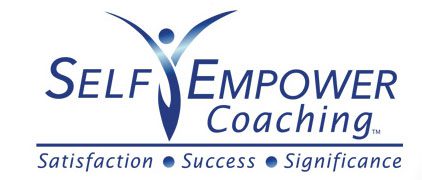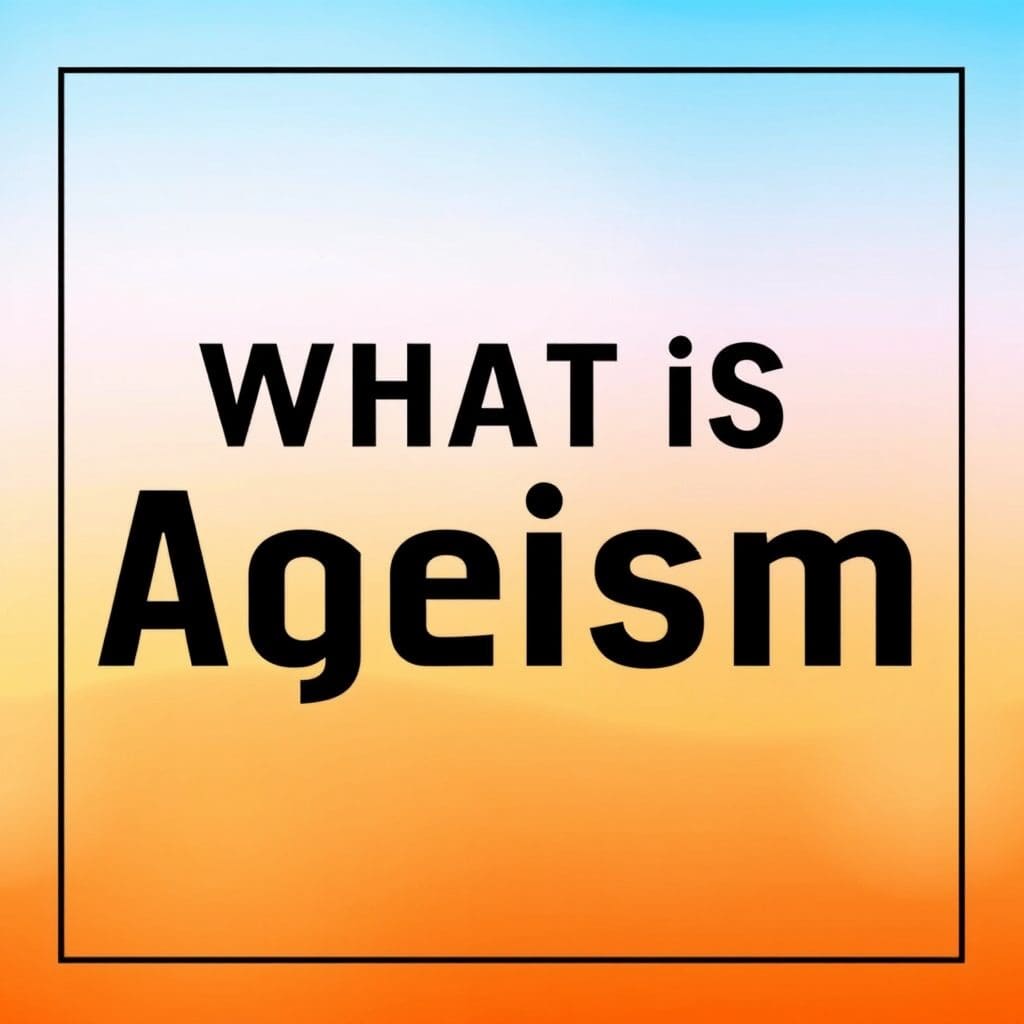 Understanding ageism is crucial for fostering an inclusive society and equitable job market. It addresses systemic discrimination against individuals based on age, particularly impacting older adults. Recognizing ageism allows policymakers, employers, and individuals to confront stereotypes and biases that can limit opportunities and undermine the contributions of experienced workers.
Understanding ageism is crucial for fostering an inclusive society and equitable job market. It addresses systemic discrimination against individuals based on age, particularly impacting older adults. Recognizing ageism allows policymakers, employers, and individuals to confront stereotypes and biases that can limit opportunities and undermine the contributions of experienced workers.
Key Takeaways
- Ageism, defined as discrimination against individuals based on their age, is harmful to both individuals and society as a whole, perpetuated by negative stereotypes, prejudice, and biases. No matter what it looks like, though, recognizing it is the first step in addressing its effects.
- Ageism pervades our lives—in the workplace, healthcare, media, and beyond. It affects younger people in a way we refer to as reverse ageism. Knowing these forms is a key first step.
- Ageism in the workplace can prevent hiring and promotions. It further restricts training opportunities, impacting older workers’ morale and productivity.
- Ageism in healthcare leads to discriminatory treatment and poor quality of care. It further perpetuates myths about health complications related to aging, bringing to light the pressing necessity for impartial medical treatment.
- Combating ageism requires education, promoting positive aging narratives, intergenerational engagement, and policies that foster age inclusiveness in workplaces and communities.
- Addressing both traditional and reverse ageism fosters greater respect and understanding of one another. This combined effort closes generational divides and creates a more unified, inclusive community.
Ageism /ˈājˌizəm/ is discrimination or prejudice against an individual based on their age. It can hurt people of every age, yet it is frequently directed at older adults in work environments, healthcare settings, and social spaces.
This bias can result in discrimination, lack of access to opportunities, and harmful stereotypes. These include, for instance, assuming older workers are less physically or cognitively capable or excluding their perspectives from key decision-making processes.
Ageism affects the personal and professional lives of workers over 50 and poses major barriers to inclusivity and equality. Combating ageism means confronting stereotypes, raising awareness, and encouraging respect for people of all ages.
By understanding its effects, society can work towards more equitable interactions and systems that value individuals regardless of age.
What Is Ageism – More…
 Ageism is defined as stereotypes, prejudices, and discriminatory actions toward individuals or groups based on their age. It can take many forms—from the belief that older people can’t handle technology to the exclusion of older job applicants.
Ageism is defined as stereotypes, prejudices, and discriminatory actions toward individuals or groups based on their age. It can take many forms—from the belief that older people can’t handle technology to the exclusion of older job applicants.
A survey released by Age Concern yesterday found that 48 percent of respondents described people over 70 as nice. Only 27% say the same about people under 30, illustrating the sharp differences in how Americans of different ages are perceived. These stereotypes, positive or negative, frequently stoke ageist prejudices that impact day-to-day social and workplace relationships.
The effects of ageism go far beyond older people themselves. Ageist beliefs limit older adults’ participation in the workforce and shape social, political, and economic attitudes and institutions.
One recent study found that older applicants in France were called in for interviews 72% less often than younger applicants. Younger people are also subjected to age-based barriers, with 43% of British youth saying they have experienced discrimination.
These societal norms dictate who can be a leader and who can’t. For instance, some jurisdictions still have a minimum age of 18 to sit on a village council.
Identifying ageism is a critical first step in combating these systemic prejudices. By questioning ageist attitudes, like assumptions about dating or professional capabilities, society can foster inclusivity and respect for all ages.
Types of Ageism
Ageism, including institutional ageism, comes in different shapes and forms and permeates all areas of everyday life. Whether in the workplace, healthcare, or media, age stereotypes fundamentally affect the way people of all ages are treated. Exploring these environments is key to comprehending the pervasive influence of ageism and the negative attitudes toward youth.
Ageism in Professional Settings
Ageism is most blatant in workplaces during the hiring process, mainly when qualified older candidates are passed up for younger hires. Career advancement may be delayed for older workers based on negative stereotypes about their perceived adaptability or technological capabilities.
These biases damage workforce morale, causing workers to feel unappreciated and lower productivity. Workers over 50 are disproportionately affected by a job market that favors young, energetic workers. This can subsequently result in their omission from promotions and training opportunities.
Examples of Workplace Ageism:
- Not hiring older applicants despite qualifications.
- Assigning training only to younger employees.
- Assuming older workers can’t learn new technologies.
Ageism in Healthcare
Ageist attitudes contribute to older patients receiving inferior care. For instance, these patients sometimes have their symptoms written off as “just aging.” This bias has restricted access to care and ignored specific aging-related concerns.
Healthcare providers can change this by providing the same quality of care and educating themselves on aging without bias.
Examples of Healthcare Ageism:
- Dismissing older patients’ complaints as normal aging.
- Prioritizing younger patients for specific treatments.
- Assuming older individuals won’t benefit from preventive care.
Ageism in Media and Advertising
The media is complicit in the negative portrayal of aging, depicting older adults as frail or as the butt of jokes. Advertisements rarely showcase older people—unless they sell something directly aimed at health care or retirement.
Social media can do one or the other—double down on these harmful notions or create spaces to counter them. Inclusive advertising featuring people of all ages can raise awareness and nurture a more positive view of older people.
Examples of Media Ageism:
- TV shows casting older characters as irrelevant.
- Ads targeting youth while ignoring older audiences.
- Social media trends mock older generations.
Reverse Ageism and Its Implications
Reverse ageism is primarily concerned with prejudices held toward younger individuals, typically branding them as inexperienced or entitled. This can further pit generations against each other, resulting in harmful stereotypes.
Fostering respect and collaboration across generations goes a long way in easing and preventing these tensions.
Examples of Reverse Ageism:
- Dismissing younger employees’ ideas as naive.
- Assuming younger people lack work ethic.
- Mocking younger generations for their lifestyle choices.
Effects of Ageism
Ageism, or discrimination based on age, impacts all of society much more than people realize, mainly through unjustified age discrimination against elderly individuals. It has a profound effect on psychological health and emotional wellness, contributing to negative attitudes and age stereotypes. By recognizing these negative impacts, we’re better positioned to challenge ageism and combat the harm it causes.
1. Physical health impacts
Ageism harms physical health by restricting access to quality care. When older adults encounter bigoted views, they can avoid seeking medical attention, allowing their conditions to worsen over time. This has been shown through research to lead to the development of poorer health outcomes, including the development of chronic conditions like heart disease or diabetes.
Recovery from injuries or illnesses can be slower for older adults due to lowered expectations or less aggressive support from caregivers. Supporting healthy aging without ageist stereotypes can empower older adults to lead active, healthier lives and to get appropriate medical care in a timely fashion.
2. Mental health consequences
The mental toll of ageism is deep. Discrimination can lead to stress, depression, and anxiety, lowering overall psychological well-being. Internalized stereotypes tend to attack one’s self-esteem, causing one to feel devalued.
Providing mental health resources specifically focusing on older adults and combating ageist attitudes will help build resilience and confidence among older Americans.
3. Social isolation and exclusion
Isolation is a dangerous effect of ageism. These discriminatory behaviors can keep older people from accessing important social activities, which can increase feelings of loneliness and isolation. We can bridge these gaps through community engagement, intergenerational programs, and inclusive practices, creating a world where everyone—young and old—feels connected.
Increased loneliness, reduced participation, and weaker community ties are significant issues. Volunteer programs, age-diverse activities, and mentorship opportunities can help address these challenges.
4. Financial challenges and limitations
Ageism directly affects the state of our careers and economic security. According to the EEOC, almost 78% of older workers have experienced or observed age discrimination in the workplace. This constrains their potential for earning income and building up a retirement nest egg, subsequently leaving many in uncertain financial circumstances.
Policies to promote equitable employment practices are essential to removing these barriers and keeping older workers healthy and engaged in the workforce. Reduced savings, job loss, and limited career advancement are common consequences. Solutions such as anti-discrimination laws and workplace age diversity initiatives are vital for improvement.
Recognizing Signs of Ageism
To combat ageism, begin by recognizing its indicators. You’ll encounter them covertly in everyday life or more overtly in organized environments such as the workplace. Identifying these signs is crucial to understanding the issue and creating a more equitable and inclusive society.
Let’s take this step deeper.
Identifying Subtle Biases
This implicit ageism can manifest in everyday exchanges. As another example, younger colleagues may accidentally undermine an older coworker’s contributions in meetings or projects based on the assumption that they are less tech-savvy.
These microaggressions, while frequently unconscious, can wear down an elder’s self-esteem and contribute to ageist stereotypes. Consider how a casual remark like, “You’re too old to understand this,” might affect someone’s confidence or sense of belonging.
Recognizing these biases is the first step to addressing them through self-reflection and honest conversations. Educating yourself and others about these unconscious biases can help create a culture that fosters more respectful interactions.
Recognizing Workplace Age Discrimination
In work environments, ageism more commonly comes in a directive manner. It might seem like a clear case when a qualified employee is denied a promotion because an up-and-coming replacement is preferred.
Older workers can be shut out of training programs. Reporting these ageist incidents to HR and documenting them to support your case is critical.
Workplace policies and training programs focused on inclusivity can help limit ageism by fostering awareness and accountability.
Spotting Ageist Language and Stereotypes
Language plays an enormous role in how ageism is perpetuated. Phrases such as “too old to learn” or “over the hill” reinforce harmful ageist stereotypes.
Awareness of how you talk about age is a critical first step to addressing and dismantling these trends. Here are some common ageist phrases to avoid:
- “You look good for your age.”
- “That’s a young person’s job.”
- “Act your age.”
What is reverse ageism?
Reverse ageism is a form of ageist discrimination against younger people, often manifesting as negative attitudes that disregard their creativity or potential due to a perceived lack of experience.
Why is tackling ageism important?
By working against ageism, particularly challenging age stereotypes, we promote equality, respect, and inclusion for people of all ages. This effort helps ensure that individuals contribute to society, stay healthy, and live well.
By promoting awareness of ageism, society can work towards eliminating barriers that hinder the economic participation of older adults, enhancing diversity, and ensuring a more balanced representation of ages in the workplace. This ultimately contributes to a more just and productive environment, benefiting individuals and organizations.


0 Comments